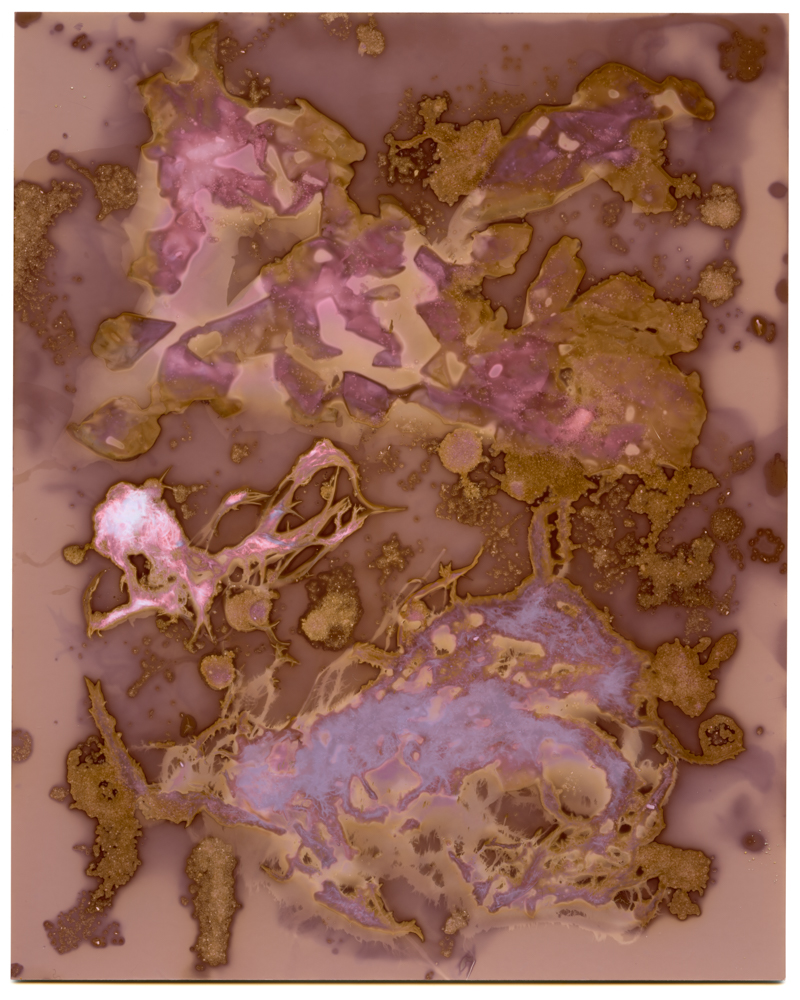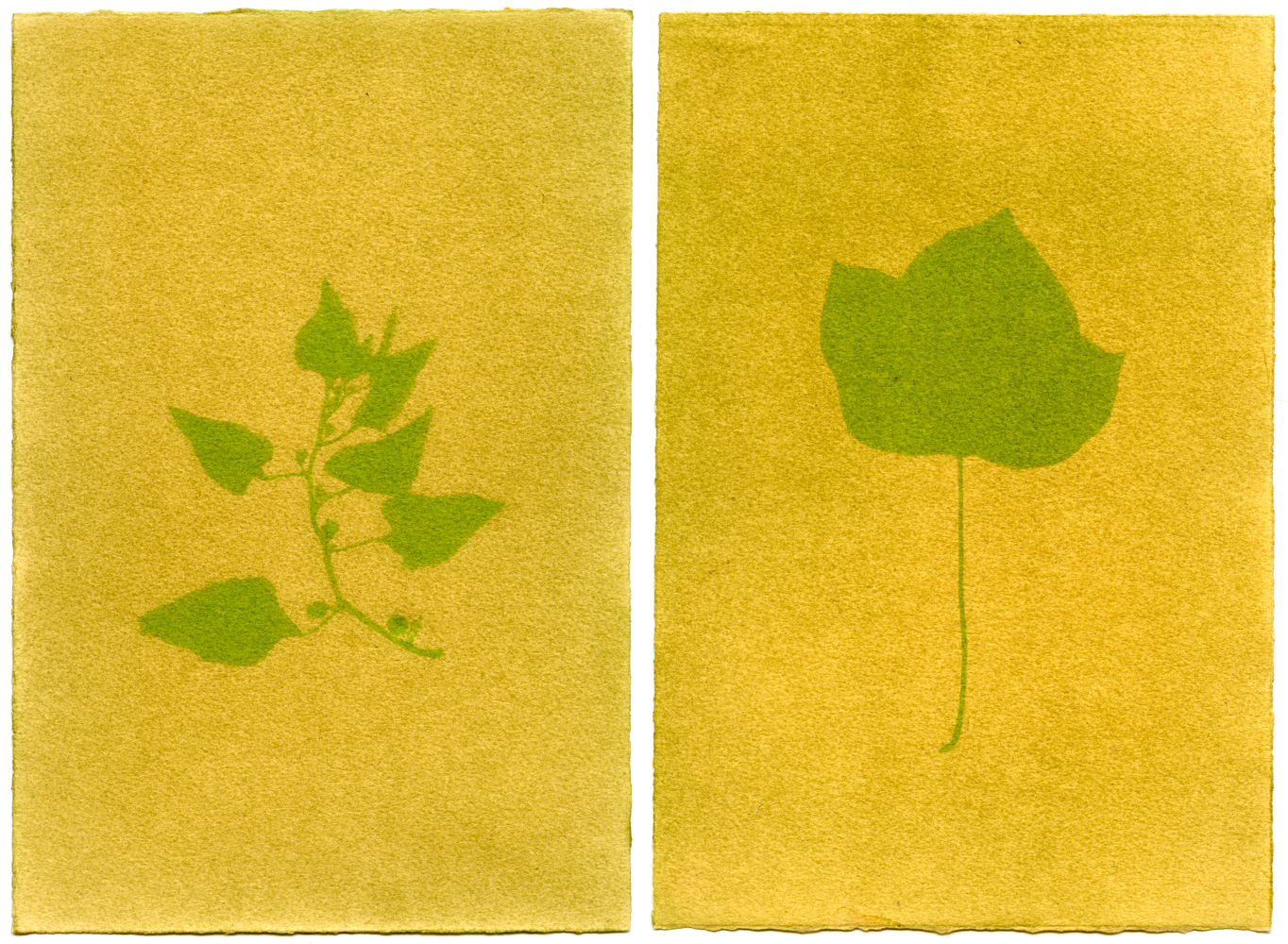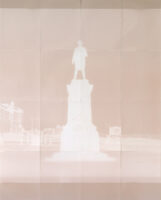
Kate Golding, 'Unlearning Cook, Part Three', 2016. 16 fixed lumen prints, 81 x 102cm. From the series 'Unlearning Cook'.
Q&A with Kate Golding
19.8.20
In advance of premiering new work at PHOTO 2021, Kate Golding shares her journey from a 10 year old watching a First Fleet Re-enactment voyage to her current project about the settler colonial mythologisation of Caption Cook, and how invigorating it is to make artwork with her toddler.
What started your relationship with photography?
Somewhere at my father’s house, in the numerous boxes of photos from my childhood, there is a photo of Dad and me taken in 1988. We are walking with purpose through a crowd, looks of concern on our faces. I have a Kodak Instamatic in my hand, Dad a Nikon compact camera around his neck. We are oblivious to the photographer, most likely my mother. I am 10 years old, behind us stands a tall ship – part of a group of ships that had just completed a First Fleet Re-enactment voyage from England to Kamay (Botany Bay). We were visiting my grandparents in Sydney for the bicentennial celebrations.
These days I’d more than likely be marching alongside the 40,000 strong crowd of First Nations people and settlers who rightly opposed the celebrations and called for First Nations’ land rights. But I was 10 and white and I was growing up in so-called Australia in the eighties.
There began my relationship with photography. With that little hand-me-down camera and some of the first photos I ever took of my family and what I was lead to believe was a major historical event.
Why did you want to be a photographer?
It has been a lifelong journey. I still have that Kodak Instamatic here in my studio. I know I took photos in high school and used the high school darkroom to develop photos for a one-off school newspaper. My family went to Ahwahnee (Yosemite National Park) and I made photographs with a disposable camera.
As an adult I took several short courses when I lived in Sydney. But if I’m honest there wasn’t some dramatic a-ha moment. I just always had a camera around and I liked to use it.
I really got into photography in 2002/2003 while I was living in Japan. I made two friends there that were incredibly influential and pivoted my life toward art making – Rebecca Knaggs and Nichole Van Beek. I am forever in their debt.
In 2008 I moved to Melbourne to formally study photography at RMIT. It was there that my activism was ignited through photography.
Since 2012 I’ve been working on a project about the settler colonial mythologisation of Captain Cook. As I’ve been reflecting on those 1988 bicentennial events I photographed as a child I can see where the seed for this work was planted all those years ago.
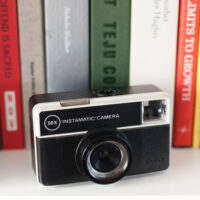
First camera - Kodak Instamatic
What is your motivation for making art? How has your practice changed over time?
My primary motivation for making art is curiosity. Curiosity about the world and my place within it. My initial photographic training focused on documentary and photojournalism. My practice has expanded over time to include alternative processes. I love making with my hands and have an extreme dislike of sitting in front of a computer.
How do ideas relating to 'The Truth’ factor into your practice?
Everything is subjective. There’s no such thing as the truth, only perspective. I think Goenpul woman, Distinguished Professor Aileen Moreton-Robinson says it best in Talkin’ up to the White Woman: Indigenous Women and Feminism – “All knowledge is situated and therefore partial.”
This idea has been a driving force in my work relating to Captain Cook, the questioning of monological narratives articulated as ‘truth’ in settler colonial histories and the significations of that history.
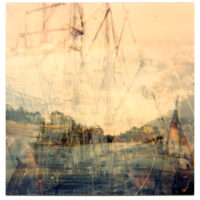
Kate Golding, Multiple exposure, First Fleet re-enactment, 1988. C-type print, 10 x 10cm
How do you go about planning for new projects?
I often start by making and reading. If what emerges holds my interest long enough then I will start reading and researching more to deepen my experience of the making. I love to research. But sometimes I do get “in my head” too much. I’m working on that.
How does your lived experience influence your work?
Is it possible to separate the two?
Who or what inspires you?
Spending time in nature with my little family. Hanging out with a toddler can help me see things anew.
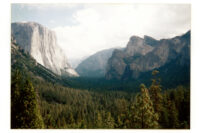
Ahwahnee (Tunnel View, Yosemite National Park), 1993. C-type print, 12.5 x 9 cm
What books are you currently reading?
I used to have a rule that I couldn’t start a new book until I’d finished the book I was reading. I’ve always loved reading but in recent years have really struggled to find the energy and time. This year in isolation I’ve had to throw all the rules out the window! I’m reading physical books, e-books and audiobooks.
I’m almost finished with ‘The Body Keeps the Score’ by Bessel Van De Kolk (I’ve been reading that since February!!) For the project that will be exhibited at PHOTO 2021 I’ve been revisiting Cook’s journal from the Endeavour voyage and also ‘Lying for the Admiralty’ by Margaret Cameron-Ash. Next up I’ve got Mark Sealy’s ‘Decolonising the Camera: Photography in Racial Time’ and Layla F Saad’s ‘Me and White Supremacy’.
I just finished listening to ‘No-Drama Discipline’ by Daniel J Siegel and Tina Payne Bryson. And I’m about to start listening to Melissa Lucashenko’s ‘Too Much Lip’. I couldn’t tell you the last time I read some fiction (aimed at “grown ups”) so I’m pretty excited for this. We spend A LOT of time reading kids books around here. For those with young children I highly recommend ‘Anti-Racist Baby’ by Ibram X Kendi, illustrated by Ashley Lukashevky and ‘Our Home, Our Heartbeat’ by Briggs, illustrated by Kate Moon and Rachael Sarra.
What is your favourite website / social media account?
I’m actively trying to reduce screen time while in lockdown. But prior to that I was really appreciating the work of @jamesptylor and @matt.chun on their project @un_monumental on Instagram.
Also @blackfulla_bookclub, @drmngnow, @blakbusiness, @rachel.cargle and @laylafsaad.
What music are you listening to?
We mainly listen to the radio at the moment. Throughout the day in our house we cycle through ABC Classic FM, ABC Jazz, ABC Kids Listen, Radio National and my personal favourite, Hawaiian Rainbow. I’ve been a student of Hawaiian mele, hula and ‘ukulele for many years so that last one won’t come as a surprise to those who know me.
If the work you are presenting at PHOTO 2021 was a song, what would it be?
Kev Carmody’s ‘Thou Shalt Not Steal’
I moved to Melbourne not long after seeing Kev Carmody perform at the 2008 Sydney Festival. I cannot overstate the effect really listening to the lyrics of this song has had on my work and life.
How are you spending your time with the current social distancing restrictions?
My partner has been able to work full-time throughout the restrictions. Without access to childcare at the moment most days I am awoken by a toddler yelling “Mum-ma” from their cot. From there it’s breakfast, playing, lunch, playing, dinner, bath time, bedtime routine. I might get some work done in the evening or meditate, do some yoga or watch something but generally pass out from being “on” all day.
What I am enjoying is the slower pace. I had allowed myself to become incredible busy prior to the pandemic. Right now, there’s nowhere to be. Nothing to miss. We are just here.
Our kid and I have been collaborating on making art together since they were able to sit up and crawl. I’m incorporating more of that into our time together during the day. Sometimes it’s little drawings, sometimes it’s big paintings, sometimes it’s photography or drawing on the concrete with chalk. We love making lumen prints in the backyard.
How do you hope our creative community will overcome this unique challenge?
It is so disheartening to see that many creatives have fallen through the cracks yet again with all the money the government is allocating to those in need. Artists are resilient if nothing else but the disrespect we’ve been shown in recent years saddens me deeply. I have loved seeing the innovative responses of artists and the creative community as a result of the global pandemic.
Do you have any daily rituals?
I have a daily meditation practice. I began meditating regularly in 2012. There have been times in the intervening years where I haven’t been able to maintain my practice but this year I recommitted myself to daily practice and so far so good. Meditation helps me focus and stay calm in challenging situations. It’s also a good way to land in the studio at the beginning of the work day.
Do you have any unrealised projects you would like to work on?
I’m always experimenting with painting on photographs. Over the years, I have had the good fortune of doing workshops with Janina Green and Micky Allen. My friend, Ruth Maddison has been incredibly generous with advice and instruction in this area too. It’s just a matter of finding the time to keep practicing, finding what works and what doesn’t. I’ve been working on this a lot more at home this year. I’m very excited about some collaborative works I’ve been making with our kid. It’s invigorating.
What advice would you give to your 15 year old self?
Absolutely nothing. 15 year old me would not have listened to 42 year old me.
